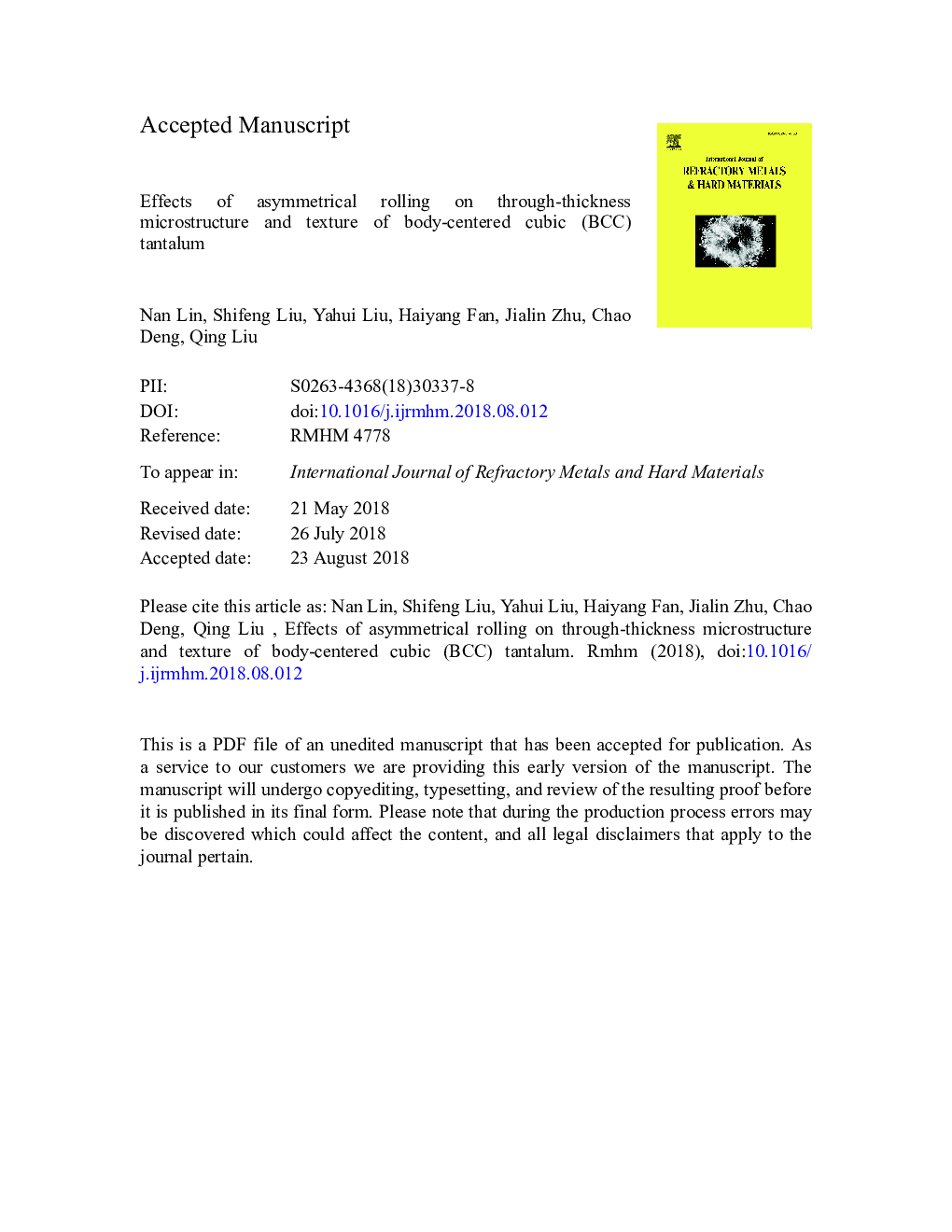| Article ID | Journal | Published Year | Pages | File Type |
|---|---|---|---|---|
| 10142071 | International Journal of Refractory Metals and Hard Materials | 2019 | 36 Pages |
Abstract
In conventional symmetric rolling (SR), the microstructure and texture inhomogeneities along the thickness are intractable problems for body-centered-cubic (BCC) metals with high stacking fault energy. In this study, high-purity tantalum was selected as a representative case, and a new asymmetrical rolling (ASR) technique was developed to alleviate this inhomogeneity. Specimens were rolled to 80% thickness reduction using 90-degree cross SR and 90-degree cross ASR; two different rolling speed ratios, namely, 1.1 and 1.2, were adopted in ASR. The through-thickness texture and microstructure were characterized via X-ray diffraction and electron backscatter diffraction. Results showed that the ASR deformed specimens presented more homogeneous through-thickness microstructure and texture than SR-deformed specimens possibly due to the highly uniform accumulative shearing strain distribution introduced by ASR. Therefore, textural and microstructural uniformity increased with increasing rolling speed ratio in ASR.
Related Topics
Physical Sciences and Engineering
Materials Science
Metals and Alloys
Authors
Nan Lin, Shifeng Liu, Yahui Liu, Haiyang Fan, Jialin Zhu, Chao Deng, Qing Liu,
